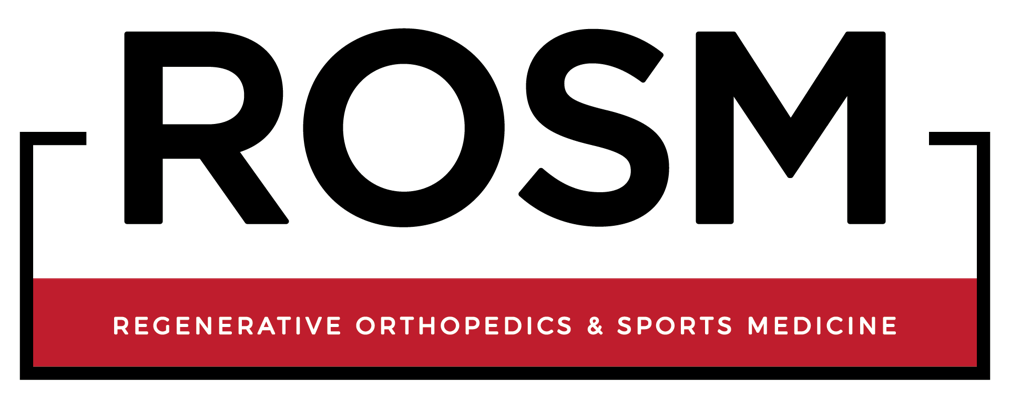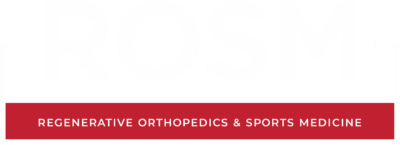Arthritis pain is a common condition that affects millions of people, often as a result of wear and tear on the body as we age. Osteoarthritis, the most prevalent form, involves the loss of cartilage within a joint. It can occur in any joint but is most common in the knees, hips, shoulders, ankles, and thumbs. Regenerative medicine offers innovative, non-surgical solutions to manage and alleviate arthritis pain effectively.
Understanding Arthritis Pain
Arthritis is more than just cartilage loss. It creates an inflammatory environment within the joint that can lead to:
- Soft tissue degeneration: Such as damage to the meniscus in the knee or the labrum in the hip and shoulder.
- Ligament instability and thickening: Affecting the joint’s stability.
- Bone marrow edema: A condition where the bone beneath the cartilage loses blood supply, leading to pain and further deterioration.
Common Causes of Arthritis
Arthritis is primarily caused by age-related wear and tear, but several factors can accelerate its development:
- Traumatic injuries: Fractures, surgeries, or other joint damage.
- Repetitive cortisone injections: Which, while relieving pain, can speed up cartilage loss and joint deterioration.
Symptoms and Diagnosis
Symptoms of Arthritis
- Stiffness and achiness.
- Joint pain and swelling.
- Symptoms that improve with activity but worsen in cold weather or with changes in atmospheric pressure.
- Popping or clicking sounds in the joint.
Diagnosing Arthritis
Arthritis is diagnosed using imaging techniques such as X-rays, ultrasounds, or MRIs to assess cartilage loss, joint damage, and inflammation.
Traditional Treatments
Traditional arthritis management focuses on symptom relief:
- Lifestyle changes: Weight loss and physical therapy to strengthen surrounding muscles.
- Medication: Anti-inflammatory drugs for temporary pain relief.
- Supportive devices: Braces or sleeves for stability.
- Cortisone injections: Used sparingly due to potential long-term joint damage.
- Surgical options: Ranging from arthroscopy (clean-up surgery) to joint replacement for advanced cases.
Regenerative Medicine Approaches
What Is Regenerative Medicine?
Regenerative medicine is a cutting-edge field that harnesses the body’s own healing mechanisms to repair damaged tissue, reduce inflammation, and restore joint function. It provides minimally invasive alternatives to traditional arthritis treatments.
Types of Regenerative Treatments
- Platelet-Rich Plasma (PRP) Therapy
PRP involves injecting a concentrated solution of the patient’s own platelets into the joint. These growth factors:
- Stimulate tissue repair.
- Reduce inflammation.
- Slow arthritis progression.
- Stem Cell Therapy
Stem cell therapy involves harvesting mesenchymal stem cells from bone marrow or adipose tissue (fat), processing them, and injecting them into the joint. Benefits include:
- Anti-inflammatory properties.
- Slowing osteoarthritis progression.
- Providing cushioning inside the joint.
Benefits of Regenerative Medicine
- Minimally invasive: Avoids risks and downtime associated with surgery.
- Long-lasting relief: Results can last from 1 to 5 years, or even longer.
- Quick recovery: Minimal downtime with faster healing.
- Reduced dependence on medication: Decreases reliance on painkillers and anti-inflammatories.
- Personalized treatment: Tailored to each patient’s unique condition and symptoms.
Find Relief from Arthritis Today
Don’t let arthritis pain limit your quality of life. Regenerative medicine offers a safe, effective, and minimally invasive way to address the root causes of your discomfort.
Contact us today to learn how regenerative therapies can help you regain mobility, reduce pain, and return to the activities you love. Let’s take the first step toward a pain-free, active lifestyle!
Disclaimer: Individual results vary. Not all patients will have the same post-procedure recovery and activity level. See your physician to discuss your potential benefits and risks.
The Lipogems System is a sterile medical device intended for the closed-loop processing of your own fat tissue in medical procedures involving the harvesting, concentrating and transferring of your own fat (adipose) tissue harvested with a legally marketed lipoplasty system. This can be a minimally invasive procedure that’s done in the office, to support soft tissue defects and may promote healing in orthopedics and arthroscopic surgery. Lipogems may or may not appropriate for all patients.
Like any medical procedure, there is a risk for soreness, redness, swelling, and/or pain. These procedures require needle access (size, location and depth vary depending on the procedure) and this may result in (but not limited to), discomfort, pain, apprehension, bruising, tenderness, bleeding, swelling, or infiltration at the injection site. Other symptoms that may occur include lightheadedness, fainting, nausea, or vomiting. There is slight risk of infection at the injection site and have minimal risk of adverse reactions or complications as with any other injection procedure. Since the fat is from your own body there is little concern of disease transmission, allergic reaction or tissue rejection. For patients with chronic medical conditions such as autoimmune, diabetes, heart or lung disease, circulatory diseases or obesity, extreme caution may be necessary.
There are rare but possible risks and complications due to fat transfer including an allergic reaction to the local anesthetic, damage to underlying structures, hematoma or seroma (an accumulation of blood or fluid under the skin that may require removal), changes in sensation, unsatisfactory results that may necessitate additional procedures, permanent discoloration caused by a ruptured blood vessel at the treatment site, calcification, a divet in the area of the tissue harvest, peri-operative bleeding, a blood clot at the treatment or donor site, an infection, scar tissue, and a fat embolism caused by a fat injection mistakenly directed into a blood vessel, and death.
The information presented is for educational purposes only. Speak to your doctor to decide if Lipogems procedure is appropriate for you. Individual results vary and not all patients will return to the same activity level. The lifetime of any procedure is limited and depends on several factors like patient weight and activity level. Your doctor will counsel you about strategies for your post-procedural care. It is important to closely follow your physician’s instructions regarding post-procedure activity, treatment and follow-up care. Ask your doctor if Lipogems procedure is right for you.
Lipogems or other corporate affiliated entities own, use or have applied for the following trademarks or service marks: Lipogems. All other trademarks are trademarks of their respective owners or holders.











